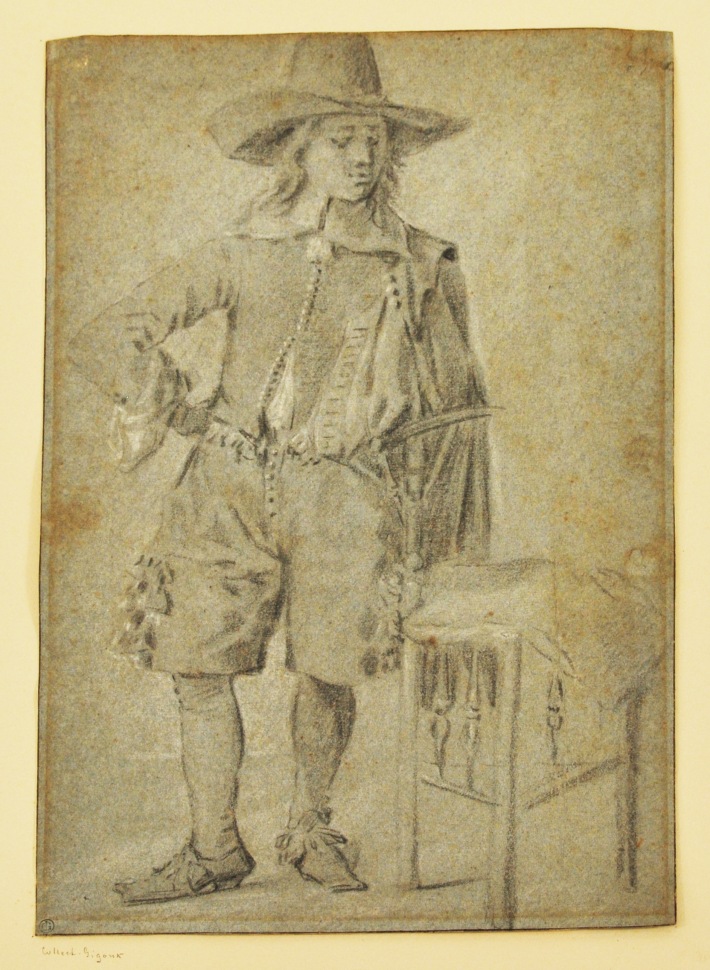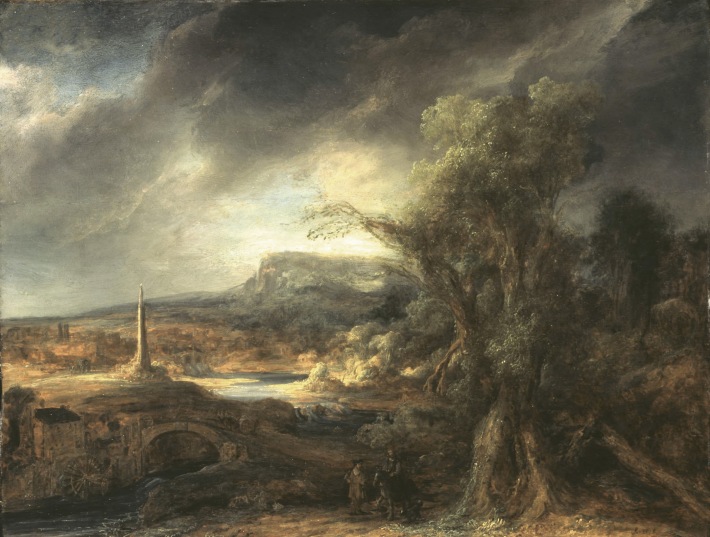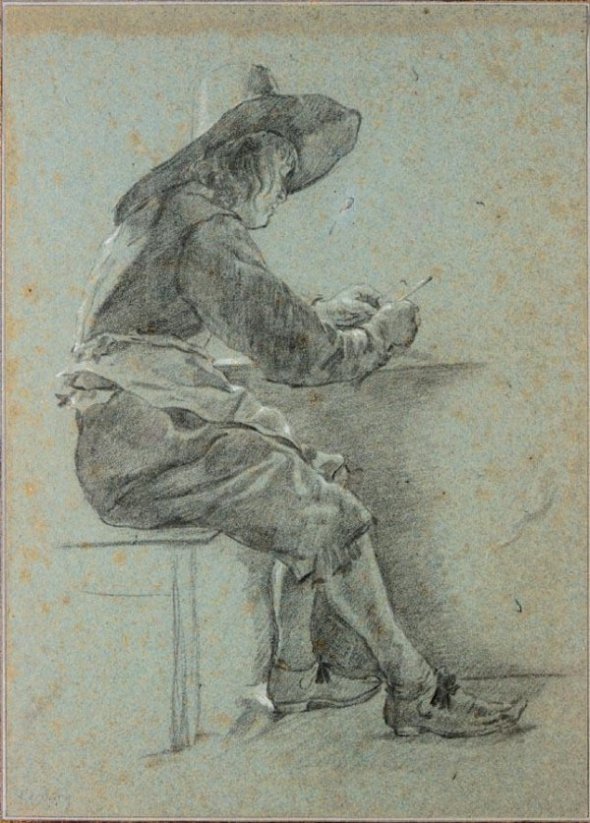The Dutchman: Which Dutchman?
by Kyle
Once the backing had been removed, it was time to take out the mat and the drawing itself. As I was still unsure as to the fragility of the piece, I removed it more cautiously than would be expected and laid it on one of our black felt lined tables. My first thought was “Man, this must have had some life.” Initial observations revealed four clues to point me in the right direction for my investigatory work.
-
A collection stamp adorning the reverse of the drawing.
-
A handwritten inscription reading “Govert Flinck/Cleven 1615_ou_16_1660,” also on the back.
-
Another handwritten inscription, “Collect Gigoux,” on the backing
-
A second collection stamp, on the bottom left corner, hidden by the mat.
I figured the best place to start was with the supposed artist. A quick Google search presented me with vast sums of information about the Govert Flinck. Flinck, born in Kleve, a Dutch city at the time, now in northwest Germany, was a portrait artist and history painter. He worked the lines under Rembrandt, becoming one of his favorite pupils emulating his style in portraiture, but had a passion for recreating historic scenes. It was this passion that provided official and diplomatic commissions. Because of this, Flinck’s notoriety as an artist grew, attributing to his great financial success. Flinck’s works have populated the the collections of famous institutions, including the Louvre in Paris, the Rijksmuseum in Amsterdam, the Metropolitan Museum of Art in New York and The Hermitage in Saint Petersburg. An interesting tid-bit. Flinck’s Landscape with an Obelisk was among the works of art stolen from the Isabella Gardner Museum in Boston in 1990, along with pieces by Degas, Vermeer, Rembrandt and Manet. Anywho, back to my search.
After scouring LiveAuctioneers for works done by Flinck and other Dutch masters, I had come to the conclusion that this was, indeed, in the style of these figures. I came across many chalk drawings on blue paper with similar subject matter by artists whose names I cannot pronounce. One in particular stood out. It seems to be of a young man, in similar attire to my piece, but from the reverse. It was sold at Sotheby’s in 2005, and in the catalog notes stated this:
“One can easily imagine finding a figure based on this study from life in a painting by one of the Bamboccianti. Little is, however, known of the figure drawing style of most of those artists, so until this figure is actually found in a painting, this highly accomplished study must remain unattributed. The clue to its authorship may perhaps lie in the fact that although the figure type and approach to lighting seem strongly Italianate, there is also a certain stylistic affinity with figure drawings by Rembrandt school artists such as Backer and Flinck.”
My next lead! To search for this figure in others’ works of art. This task may seem daunting, but I’m just too far in stop. I must continue on.


